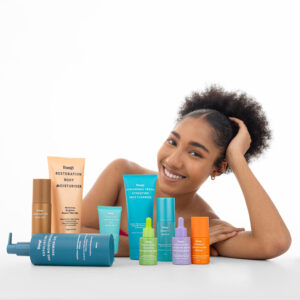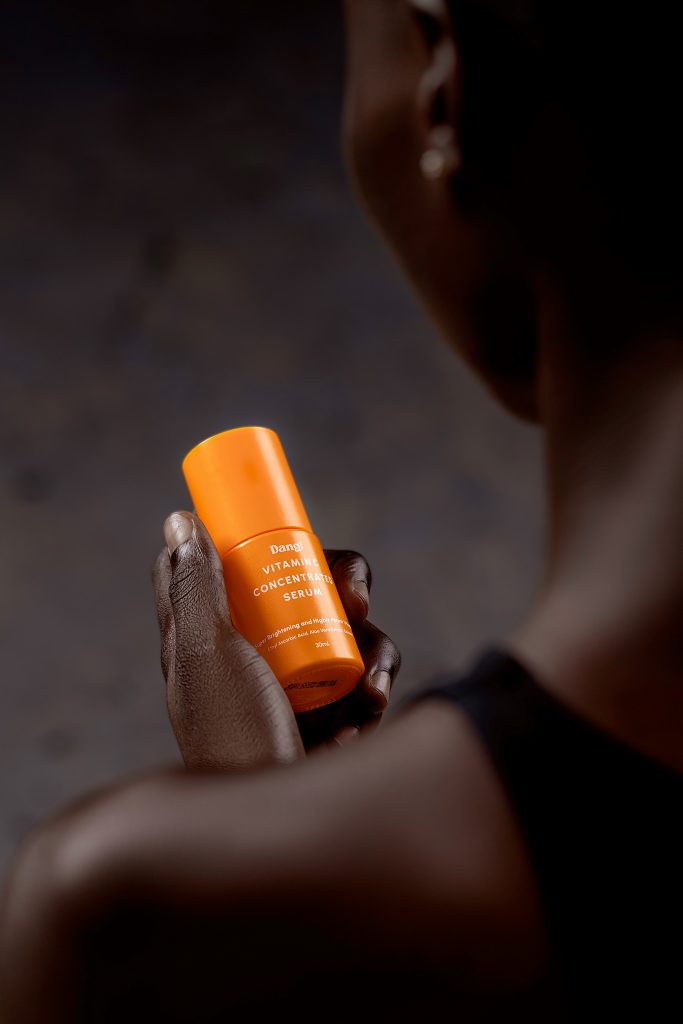
Free Shipping on Orders Over N200,0000 within Lagos
Buy 300k and get 20% off any spa service
Free Shipping For Orders over $150
Free Shipping For Orders over £100

Skincare actives are all the rave in the skincare world right now. You’ve probably noticed this as well.
According to our expert estheticians, “skincare actives are specific ingredients in skincare products that are scientifically proven to have a direct effect on the skin, targeting specific concerns such as ageing, acne, or hyperpigmentation, by delivering benefits at a cellular level to improve the skin’s health and appearance’.
In simpler words; skincare actives are like special ingredients in skincare products that target problems like wrinkles, pimples, or dark spots. They work by going deep into your skin to make it healthier and look better.
In this post, we’ll take a deep dive into what skincare benefits are, the different types, and their benefits for the skin.
We’ll also consider how to use them and how not to use them, because incorporating active ingredients into skincare can be quite tricky.
So, follow this guide to discover all you need to know about active ingredients in skincare.
Skincare actives are powerful ingredients that target specific concerns like wrinkles or dryness. These science-backed ingredients can transform your routine and help you achieve healthy, glowing skin.
In our several years of being in this industry and catering to melanin-rich skin, we’ve experienced the transformative power of this potent ingredient.
So let’s explore what it is and it’s incredible benefits for your skin.
Niacinamide, also known as vitamin B3, is a powerful active ingredient in skincare. Its primary function is to support the skin barrier, which acts as your skin’s first line of defence against environmental aggressors like pollution and UV rays.
It helps your skin by keeping it moist and shielding it from harmful substances. This results in skin that’s healthier and brighter.
Now, let’s dive into the amazing benefits of niacinamide:
In summary, incorporating it into your skincare routine is like giving your skin a daily dose of vitamins and nutrients. With consistent use, you can expect to see significant improvements in the overall appearance of your skin.
So, whether you’re looking to address specific concerns or simply maintain a healthy, glowing complexion, niacinamide is a must-have ingredient to consider.
This is why we recommend including this product in your regimen. Trust us, your skin will thank you for it!
Hyaluronic acid is celebrated for its impressive benefits, particularly in hydration and skin plumping. This ingredient works by attracting and holding moisture, ensuring your skin remains hydrated and supple throughout the day.
Moreover, hyaluronic acid plays a vital role in addressing fine lines and wrinkles. By replenishing moisture and promoting skin elasticity, it helps to visibly reduce the appearance of ageing signs, leaving you with a smoother, more youthful complexion.
Recent research published in the National Library of Medicine has provided compelling evidence of the efficacy of topical hyaluronic acid. A study involving forty females aged 30-65 showed significant improvements in skin hydration, smoothness, and reduction of fine lines and wrinkles.
These findings highlight the effectiveness of topical hyaluronic acid in skincare routines worldwide.
In a nutshell, here’s how integrating this ingredient into your skincare regimen can benefit your skin.
1. Hydration: Hyaluronic acid attracts and retains moisture in the skin, helping to keep it hydrated and supple.
2. Plumping: By holding onto water molecules, hyaluronic acid plumps up the skin, reducing the appearance of fine lines and wrinkles.
3. Skin Elasticity: Hyaluronic acid promotes elasticity by maintaining hydration levels, resulting in firmer, more resilient skin.
4. Smoothness: Its ability to hydrate and plump the skin contributes to a smoother complexion, diminishing the appearance of roughness and uneven texture.
5. Wrinkle Reduction: Hyaluronic acid helps to fill in and smooth out fine lines and wrinkles, giving the skin a more youthful appearance.
In summary, hyaluronic acid works by attracting and retaining moisture in the skin, which leads to improved skin texture and appearance.
Using it alone or in combination with other skincare products containing this ingredient can certainly work wonders for your skin.
The talk about skincare actives will be incomplete without mentioning this ingredient. Having been in the skincare world for several years, I have experienced firsthand the remarkable benefits of Vitamin C in skincare.
It was a total game-changer for me. This potent ingredient is a brightening powerhouse, effectively evening out skin tone and reducing the appearance of dark spots.
Its antioxidant properties are invaluable, offering protection against environmental stressors like pollution and UV damage. Let’s explore the remarkable benefits of this ingredient.
1. Brightening: Vitamin C is a potent brightening agent, effectively targeting dullness and infusing your skin with a vibrant glow.
2. Dark Spots Remover: Its remarkable ability to inhibit melanin production makes Vitamin C a go-to for fading dark spots and evening-out skin tone.
3. Antioxidant properties: Acting as a powerful antioxidant, Vitamin C shields the skin from free radical damage, preventing premature ageing and promoting a youthful complexion.
4. Boost collagen production: By stimulating collagen synthesis, Vitamin C helps firm and plump the skin, reducing the appearance of fine lines and wrinkles.
5. Sun damage protection: Vitamin C offers added protection against UV-induced skin damage, enhancing the effectiveness of sunscreen and promoting overall skin health.
Overall, incorporating vitamin C into your skincare routine can help you achieve radiant and healthy-looking skin.
Let’s explore the transformative power of ceramides. Ceramides are like silent defenders, defending our skin from the harshness of our environment and helping us maintain a youthful and radiant look.
Hence, this ingredient is a must-have for anyone hoping to start a good skincare routine that will elevate their skincare journey. Here’s how it enhances the skin:
1. Strengthening the Barrier: Ceramides play a crucial role in reinforcing the skin’s protective barrier, shielding it from external aggressors like pollution and harsh weather conditions.
2. Hydration Boost: By locking in moisture, ceramides help combat dryness, leaving your skin feeling soft, supple, and hydrated.
3. Improved Skin Health: With regular use, ceramides contribute to overall skin health, promoting a smoother texture and a more radiant complexion.
In essence, incorporating ceramides into your skincare regimen is like giving your skin a much-needed dose of strength and resilience, resulting in healthier, more beautiful skin.
Retinol, a derivative of vitamin A, has been making waves in the skincare community for its exceptional benefits. This skincare active is truly a game-changer when it comes to addressing ageing concerns.
Here’s why retinol deserves a prime spot in your skincare routine:
1. Smooth Skin Texture: Retinol works wonders at refining skin texture, helping to diminish the appearance of fine lines and wrinkles. Its gentle yet effective exfoliation properties promote smoother, more radiant skin.
2. Reduces Wrinkles: One of Retinol’s standout qualities is its ability to tackle wrinkles head-on. By encouraging cell turnover, it helps fade the look of wrinkles over time, revealing a more youthful complexion.
3. Boosts Collagen Production: Collagen is the key to plump, firm skin, and retinol is a pro at stimulating its production. With regular use, it can help restore elasticity and firmness, resulting in a more supple appearance.
In essence, if you’re seeking smoother, firmer, and overall more youthful-looking skin, incorporating retinol into your routine is undoubtedly a wise choice.
With its proven track record and glowing reviews from dermatologists and skincare professionals alike, retinol has become a staple in countless skincare routines worldwide.
So join the countless individuals who have embraced retinol and experienced its transformative effects firsthand.
This is another powerhouse ingredient that deserves a top spot in your skincare regimen. Here’s why:
1. Effectively combats hyperpigmentation: Azelaic acid works wonders at fading dark spots and uneven skin tone caused by hyperpigmentation. Its ability to inhibit melanin production helps to gradually lighten those stubborn areas, revealing a more even complexion over time.
2. Fights inflammation and acne-causing bacteria: Say goodbye to pesky breakouts! Azelaic acid possesses anti-inflammatory properties that calm redness and irritation, making it a valuable asset in managing mild acne.
By targeting acne-causing bacteria and regulating sebum production, it helps keep those blemishes at bay without causing excessive dryness or irritation.
In short: incorporating azelaic acid into your skincare routine can lead to noticeable improvements in hyperpigmentation, acne, and overall skin health. So, why not give this skincare superstar a try and unlock the potential for your best skin yet?
Benzoyl peroxide is another active ingredient when it comes to combating acne and blemishes. Here’s why it’s a game-changer:
1. Fights Acne: Benzoyl peroxide effectively targets acne at its root by eliminating acne-causing bacteria. Its powerful antibacterial properties penetrate deep into the pores, helping to reduce inflammation and breakouts.
2. Oil Control: It helps to regulate sebum production, keeping oily skin in check and preventing clogged pores that can lead to breakouts.
3. Exfoliation: Not only does benzoyl peroxide fight acne, but it also aids in exfoliation. By removing dead skin cells, it helps to unclog pores and promote cell turnover, revealing smoother, clearer skin.
In summary, benzoyl peroxide is your go-to solution for banishing acne and achieving a clearer, healthier complexion.
Peptides are small yet mighty molecules that play a crucial role in maintaining the health and vitality of your skin. They’re like the building blocks of protein, essential for collagen and elastin production, which are vital for skin firmness and elasticity.
Here’s why using products that integrate this active ingredient is essential for you:
1. Collagen Booster: Peptides stimulate collagen synthesis, helping to firm and plump the skin, and reducing the appearance of fine lines and wrinkles.
2. Enhanced Elasticity: By promoting elastin production, peptides improve skin elasticity, resulting in a more youthful and resilient complexion.
3. Hydration Boost: Certain peptides have moisturising properties, attracting and retaining moisture in the skin for a hydrated and supple appearance.
4. Brightening Effect: Some peptides target hyperpigmentation, helping to even out skin tone and reduce the appearance of dark spots.
5. Skin Repair: Peptides can aid in the skin’s natural repair process, accelerating wound healing and minimising inflammation.
Incorporating peptides into your skincare routine can lead to a visible improvement in the overall health and appearance of your skin. So, embrace the power of peptides and unlock a brighter, firmer, and more radiant complexion.
Mandelic acid, derived from bitter almonds, is a gentle yet effective alpha-hydroxy acid (AHA) renowned for its remarkable exfoliating properties. Unlike other AHAs, mandelic acid boasts a larger molecular size.
This makes it ideal for people with sensitive skin or deeper skin tones because it penetrates more slowly, minimising irritation.
Here’s why mandelic acid deserves a spot in your skincare regimen:
1. Gentle Exfoliation: Mandelic acid removes dead skin cells, revealing a brighter, more radiant complexion without the harshness often associated with physical exfoliants.
2. Acne Control: Its antibacterial properties make it a potent ally in the fight against acne, helping to unclog pores and reduce inflammation for a clearer, smoother complexion.
3. Fades Hyperpigmentation: Mandelic acid targets hyperpigmentation, including dark spots and post-inflammatory hyperpigmentation (PIH). By inhibiting melanin production and promoting cell turnover, it gradually lightens discolouration, unveiling a more even skin tone.
Incorporating mandelic acid into your skincare routine can lead to transformative results, leaving your skin renewed, refreshed, and radiant.
Tranexamic acid is fast becoming a rising star in skincare. Incorporating this ingredient into your skincare journey can be the key to unlocking a brighter, more even complexion for your melanin-rich skin.
Some of the remarkable benefits of this ingredient include:
1. Clears dark spots and hyperpigmentation: With this ingredient in your skincare product, you can say goodbye to dark spots and uneven skin tone. Tranexamic acid effectively targets hyperpigmentation by inhibiting melanin production, resulting in a more uniform complexion with continued use.
2. Anti-inflammatory properties: It helps soothe redness and inflammation, making it an ideal solution for people with sensitive skin prone to flushing or rosacea.
3. Sun damage repair: It helps fade sunspots and reduce the damage caused by harmful UV rays, promoting a radiant, youthful glow.
There you! We’ve explored what tranexamic acid can do for the skin. It’s up to you.
Bottom line: Incorporating tranexamic acid into your skincare routine can lead to remarkable improvements in hyperpigmentation, redness, and overall skin clarity.

Now let’s talk about a very sensitive topic when it comes to incorporating actives into your skincare routine. It can be quite tricky to know which to combine, and vice versa.
For clarity, the concept of “in the same routine” in the skincare world means using different products containing these actives on your skin consecutively or simultaneously (immediately after the other).
While layering skincare actives can be beneficial for targeting various skin concerns, it’s essential to proceed with caution. Some ingredients may interact negatively when used together, leading to irritation, sensitivity, or reduced efficacy.
When it comes to the ingredients discussed here, there are a few combinations to avoid to prevent adverse reactions.
This is because benzoyl peroxide can oxidise retinol, rendering it less effective and potentially causing irritation.
It’s best to alternate products containing these two ingredients on different days or use them in separate routines (morning and night) to maximise their benefits and minimise skin irritation.
When it comes to combining skincare actives for maximum benefits, certain pairings can work wonders for your skin, such as:
These two powerhouses complement each other beautifully. Niacinamide helps regulate oil production and improves skin texture, while hyaluronic acid provides deep hydration, resulting in a plump, glowing complexion.
Vitamin C brightens the skin and boosts collagen production, while retinol enhances cell turnover and reduces the appearance of fine lines and wrinkles. Together, they create a potent anti-aging cocktail.
Strengthen your skin’s barrier and promote elasticity with this winning combination. Ceramides replenish moisture and fortify the skin’s protective barrier, while peptides stimulate collagen synthesis, resulting in smoother, firmer skin.
Azelaic acid targets dark spots and acne, while tranexamic acid further brightens the complexion and reduces redness. Together, they tackle discoloration for a more even skin tone.
Using azelaic acid and retinol together can be a powerful duo in your skincare routine. However, it’s essential to approach this combination with caution.
Both ingredients are known for their effectiveness in targeting acne and improving skin texture, but they can also cause sensitivity and irritation, especially when used together.
As such, it is advisable to start by using each ingredient separately to allow your skin to adjust before considering combining them.
There’s a lot of debate among skincare experts regarding the question, “Can you layer niacinamide and vitamin C together in the same routine?
Our expert opinion on this subject is that, together, they form a perfect pair, offering a myriad of benefits that can transform your skincare journey.
So, you can combine them in this order: you can apply vitamin C first (for stability), followed by niacinamide after a few minutes. Alternatively, you can use them at different times (vitamin C AM and niacinamide PM).
Above all, by incorporating these complementary skincare actives into your routine, you can address multiple skin concerns simultaneously, leading to healthier, more radiant skin.
Just remember to introduce new ingredients gradually and patch test beforehand to ensure compatibility with your skin.
It’s important to note that the term “skincare actives” or “ingredients” in this context means skincare products that have been formulated by professionals in their appropriate proportion for the end user (commercial use)
So, when looking to buy skincare actives, you’ll come across them as formulated skincare products or combined with other skincare products.
That said, here are our recommended skincare actives that can transform your skincare journey.
Here’s how to incorporate potent ingredients into your self-care routine.
In skincare, the standard practice is to use products with a thinner consistency, like toners and serums, followed by moisturizing ingredients like face creams.
Oil-based products to lock in moisture and sunscreen, especially in the morning, to protect your skin from sun damage.
However, whenever in doubt, refer to the product packaging for directions or speak with a professional for clarity.
That said, here are the basic steps to layer your actives.
Start your routine with a gentle cleanser to remove dirt, oil, and impurities without stripping the skin. Use a gentle and moisturising shower gel for your body and a gentle face wash to cleanse your face.
Next, use a hydrating toner containing ingredients like hyaluronic acid to prep the skin for better absorption of subsequent products.
Morning: Apply Vitamin C serum to freshly cleansed skin. Vitamin C helps brighten the complexion, protect against environmental damage, and boost collagen production.
Remember to use the right vitamin C serum for your skin type. For oily skin, a water-based vitamin c serum for oily skin is best.
On the other hand, if you have dry/normal skin, our oil-based Q10+ vitamin C serum will be ideal for you.
Next, apply a collagen and hydrating serum with ceramides to deeply hydrate and plump the skin.
Alternatively, you can use a snail mucin serum containing tranexamic acid. The benefits of snail mucin on the skin cannot be overemphasized.
Snail mucin is effective for improving skin moisture and elasticity.
Evening: At night, include azelaic acid into your routine, after vitamin C and other serums mentioned above . This ingredient targets hyperpigmentation and acne and improves overall skin texture.
Apply a moisturizer containing ceramides to lock in moisture and strengthen the skin barrier. This step is essential for all skin types, especially if you’re using active ingredients that may cause dryness or irritation.
You can moisturize with this Ceramides Buffet Day cream in the morning and the Snail Secretion Filtrate Repair cream with tranexamic acid at night.
Finish off your morning routine with a broad-spectrum sunscreen with SPF 30 or higher to protect your skin from harmful UV rays and prevent further sun damage. Ensure to use the right type.
For instance, the Dang Ageless Invincible Sun Protection Gel is best for dry and normal skin types. Likewise, the Dang Ageless Mineral Sunscreen is best for oily and combination skin types.
Evening: Incorporate Retinol into your nighttime routine. Start with a lower concentration and gradually increase the frequency as your skin tolerates it.
Retinol promotes cell turnover, reduces fine lines and wrinkles, and improves overall skin texture.
Spot Treatment: Use benzoyl peroxide as a spot treatment for acne breakouts.
Exfoliation: Consider using a gentle exfoliant containing mandelic acid once or twice a week to remove dead skin cells and unclog pores.
You can use a mandelic acid exfoliating face wash or a mandelic acid exfoliating toner if you prefer a leave-on exfoliant.
Ensure you exfoliate your face the right way to avoid over-exfoliation and irritation.
Follow these steps to establish a good skincare routine that your skin will be thankful for for years to come. If you have any specific skin concerns or conditions, it’s always a good idea to consult with an aesthetician for personalized recommendations.
Introduce one new active ingredient at a time into your skincare routine. This allows your skin to adjust and helps you pinpoint any potential irritants or sensitivities.
Before applying a new active ingredient to your entire face, perform a patch test on a small area of skin. This helps determine if your skin will react negatively to the product.
Always read and follow the instructions provided with your skincare products. Pay attention to the recommended usage frequency and application methods to ensure optimal results.
Some skincare actives, such as retinoids and AHAs, can increase your skin’s sensitivity to the sun. Always wear sunscreen with broad-spectrum protection and reapply as needed, especially when using these ingredients.
Hydrated skin is happy skin. Incorporate a moisturizer into your skincare routine to help maintain your skin’s moisture barrier and prevent dryness or irritation, especially when using potent actives.
Pay attention to how your skin reacts to different skincare actives. If you experience irritation, redness, or discomfort, discontinue use and consult with a skincare professional.
Some skincare actives can be incompatible when used together. For example, avoid combining retinoids with AHAs or BHAs to prevent excessive irritation. If you’re unsure, seek advice from a skincare expert.
Skincare actives often take time to deliver visible results. Give your skin time to adjust, and be consistent with your routine to achieve the best outcomes.
By following these basic tips, you can effectively incorporate skincare actives into your routine while minimizing the risk of irritation and maximizing the benefits for your skin.
Remember, everyone’s skin is unique, so it’s essential to tailor your skincare regimen to suit your individual needs and concerns.
In conclusion, incorporating skincare actives into your routine can truly transform your skin, address various concerns, and promote healthier, more radiant skin. So, embrace the power of skincare actives and embark on your journey to glowing, vibrant skin today!
Remember, your skin deserves the best care. Ready to elevate your skincare routine?
Start now and see the difference for yourself!
Whether you should use actives every day depends on your skin type, the specific active ingredient, and its concentration.
Some actives, like gentle exfoliants or antioxidants, can be used daily, while others, such as retinoids, may require a more gradual introduction to avoid irritation.
Overall, it’s essential to listen to your skin and adjust your routine accordingly.
The standard practice is to apply actives before moisturizer to allow them to penetrate the skin effectively. Actives like serums or treatments should be applied to clean, dry skin, followed by moisturizer to seal in the active ingredients and provide hydration.
The best ingredient for ageing skin depends on individual skin concerns and needs. However, ingredients like retinoids (such as tretinoin), vitamin C, peptides, and hyaluronic acid are commonly recommended for addressing signs of ageing, including fine lines, wrinkles, loss of elasticity, and uneven tone.
Yes, it’s generally safe to use hyaluronic acid every day. Hyaluronic acid is a hydrating ingredient that helps attract and retain moisture in the skin.
This makes it suitable for daily use, especially for individuals with dry or dehydrated skin. However, follow up with a moisturizer to prevent moisture loss.
Niacinamide is a versatile skincare ingredient that offers multiple benefits for the skin. It helps improve skin texture by promoting collagen production and reducing the appearance of enlarged pores.
Furthermore, it regulates oil production and has anti-inflammatory properties that can soothe redness and irritation. Overall, niacinamide contributes to a smoother, brighter complexion and is suitable for various skin types.




